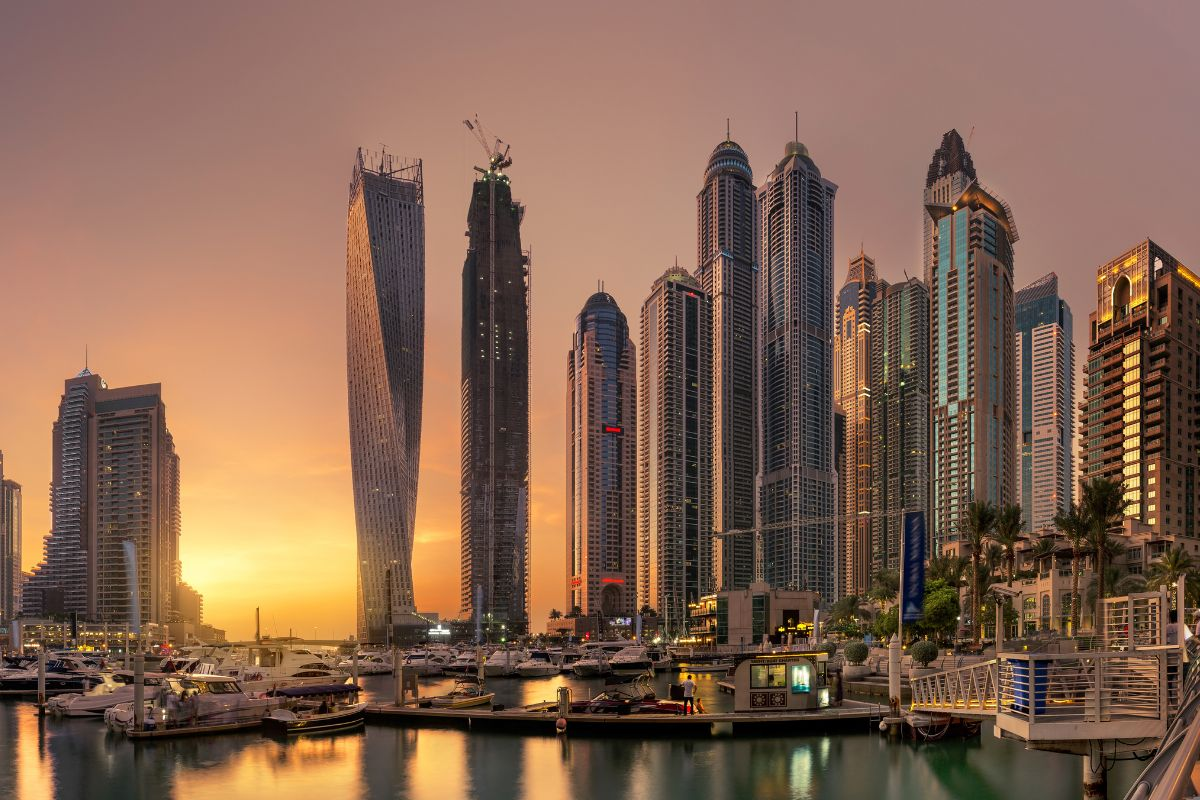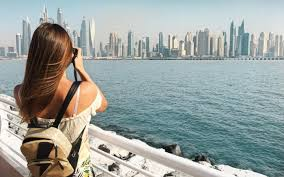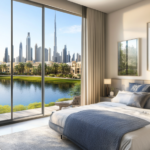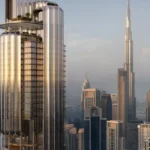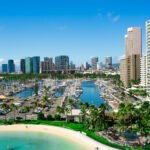Now Reading: Dubai’s Vibrant Villas: Families Embrace Thriving Community Living Surge!
-
01
Dubai’s Vibrant Villas: Families Embrace Thriving Community Living Surge!
Dubai’s Vibrant Villas: Families Embrace Thriving Community Living Surge!
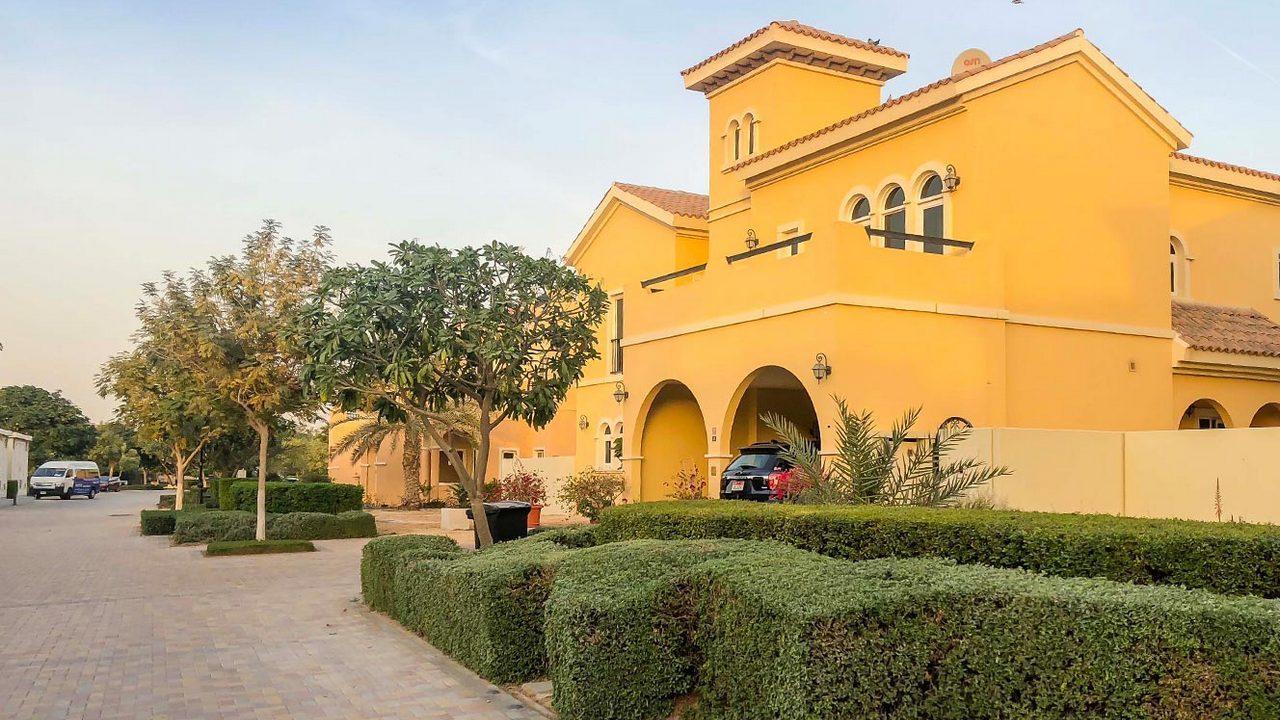
Table of Contents
Imagine walking into a spacious villas, your kids laughing in a sunlit garden, a smart home system setting the mood for a family movie night, and a community app buzzing with invites to a neighborhood barbecue or kids’ soccer match. This is the heart of Dubai’s lifestyle properties in 2025, where community living is drawing families with its blend of space, connection, and modern comfort. These aren’t just homes they’re warm sanctuaries where families create lasting memories, making Dubai a city that feels both vibrant and deeply welcoming.
Dubai is a global hub that thrives on bold vision, weaving cutting-edge technology with a multicultural spirit. In 2025, family-oriented communities like Jumeirah Village Circle (JVC), Dubai Hills Estate, Mohammed Bin Rashid City (MBR City), and The Valley by Emaar are leading the real estate surge, offering villas and townhouses designed for togetherness. With expansive layouts, family-focused amenities, and smart technology, these properties are why families from around the world are choosing Dubai for community living. Let’s explore what’s driving this family-centric trend in 2025.
The Allure of Community-Focused Properties
What makes Dubai’s lifestyle properties so irresistible to families? It’s their ability to combine spacious, nurturing homes with a sense of belonging that fosters joy and connection. Picture a JVC villa, its terrace perfect for family dinners, surrounded by 33 parks where kids can play freely. Dubai Hills Estate offers elegant villas with private gardens overlooking a golf course, ideal for family gatherings. MBR City’s waterfront homes feature private pools and lagoon views, while The Valley’s Eden community provides nature-inspired villas with green spaces for outdoor fun. These communities, crafted by developers like Emaar, Nakheel, and Sobha Realty, are designed to make family life extraordinary.
Each community has a unique family vibe. JVC’s village-like charm includes parks, cycling trails, and community centers, creating a safe haven for kids and parents. Dubai Hills Estate blends upscale living with green spaces, featuring the Dubai Hills Mall and top schools like GEMS International. MBR City dazzles with its 7-km Crystal Lagoons, offering water-based family activities. The Valley’s Eden community emphasizes nature with parks and outdoor fitness zones, perfect for active families. Residents enjoy amenities like private pools, smart home systems, and 24-hour security, alongside proximity to schools and business hubs like DIFC, just 15-30 minutes away.
The homes are tailored for family living. JVC’s Circle Villas offer 3- to 5-bedroom layouts with spacious terraces and access to community parks. Dubai Hills’ Golf Place provides 4- to 6-bedroom villas with home offices and playrooms. MBR City’s District One features mansions with multi-generational layouts and private docks. The Valley’s Eden villas offer 3- to 5-bedroom homes with green terraces and nature trails. These homes combine family-friendly features like large living areas and safe play spaces with smart technology, such as AI-driven climate control, security systems, and community apps, creating spaces that feel both nurturing and modern.
Why Families Are Driving Demand
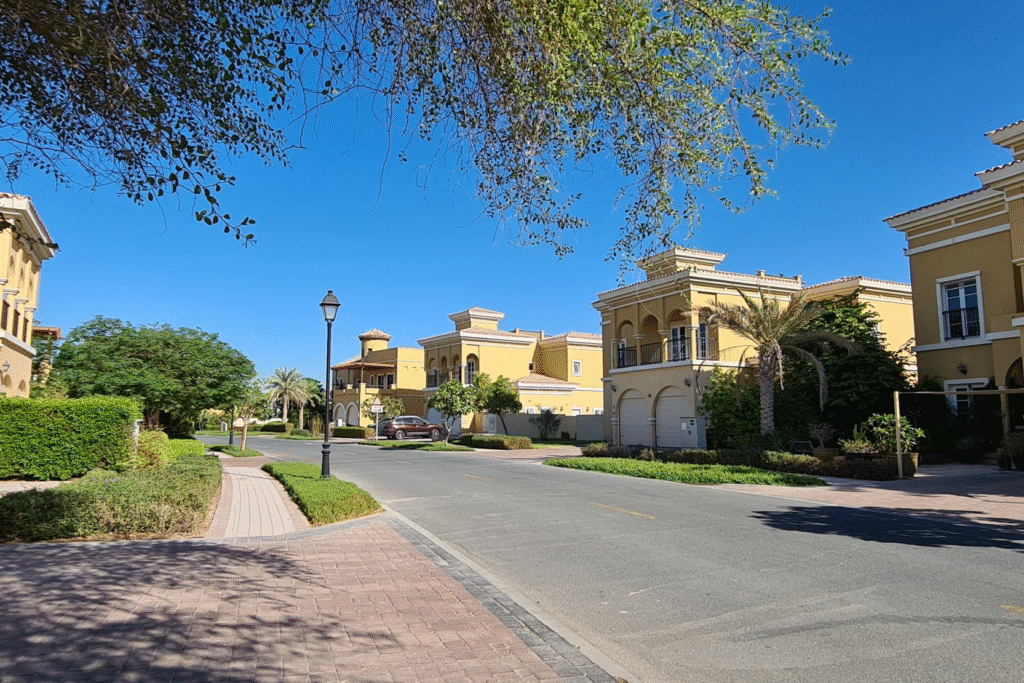
The numbers behind Dubai’s lifestyle property market are impressive. In 2025, property values are rising 10-14% year-on-year, aligning with Dubai’s 11.3% market average. MBR City villas average AED 10-25 million, with 15% growth over five years, while JVC villas range from AED 2-4 million, up 12% annually. Dubai Hills villas fetch AED 10-20 million, and The Valley’s Eden villas average AED 2-5 million, with 12% growth. Rental yields are strong at 5-7%, driven by demand from families and expatriates. Short-term rentals, fueled by Dubai’s 17.2 million visitors in 2024 and a projected 25 million by 2030, achieve 70-80% occupancy, with nightly rates of AED 1,000-5,000.
Families are driving demand because these properties cater to their need for space, safety, and community. Multi-generational families seek 4- to 7-bedroom layouts with room for kids, grandparents, and home offices, particularly in JVC and The Valley. Affluent families are drawn to the prestige and amenities of Dubai Hills and MBR City, where smart systems enhance daily life.
JVC’s affordability, with villas 40-60% cheaper than in Downtown Dubai, appeals to young families, while The Valley’s nature-focused design attracts eco-conscious families. Off-plan projects, like Sobha Hartland II in MBR City and Nara in The Valley, account for 40% of sales, with families targeting their family-friendly designs and growth potential. Dubai’s reputation as a safe, family-oriented hub attracts buyers from Europe, Asia, and the Middle East.
Dubai’s investor-friendly policies fuel the surge. Full freehold ownership allows global buyers to invest without restrictions, and the UAE’s tax-free environment—no income, property, or capital gains taxes—maximizes returns. Off-plan properties require just 10-20% upfront, lowering the entry barrier for families. High-value purchases qualify for the UAE’s Golden Visa, offering residency benefits that appeal to families seeking long-term stability. Connectivity is seamless, with Sheikh Zayed Road, Al Khail Road, and the Dubai Metro linking these communities to Downtown Dubai and DIFC within 15-30 minutes.
A Lifestyle That Feels Warm and Connected
Living in Dubai’s community-focused properties is about more than space it’s about connection and joy. In JVC, families gather for picnics in 33 parks or community events like soccer matches, where kids bond and parents relax. Dubai Hills residents enjoy family festivals at the Dubai Hills Mall, golf course strolls, and yoga sessions in green spaces. MBR City’s Crystal Lagoons host water sports and waterfront picnics, while The Valley’s Eden community offers nature trails and outdoor movie nights. These neighborhoods are designed to nurture family bonds, with safe play areas, sports facilities, and smart apps that organize community events.
Take Aisha, a mother of two in JVC. “The parks are our playground,” she says. “We cycle as a family, and it feels so warm.” Omar, a father in Dubai Hills, loves the community vibe. “Our villa’s garden is perfect for the kids, and the mall is steps away,” he shares. Noor, a young mother in MBR City, cherishes the lagoon. “We have family picnics by the water, and it’s magical,” she says. In The Valley, Sarah, an expat parent, adores the nature focus. “Our kids love the trails, and the community events are so welcoming,” she says.
Sustainability is a growing draw. Communities like Dubai Hills and MBR City incorporate solar panels, smart irrigation, and energy-efficient designs, aligning with the Dubai 2040 Urban Master Plan. JVC’s green spaces and The Valley’s eco-friendly landscaping reduce environmental impact, while projects like Sobha Hartland II feature EV charging stations and AI-driven utilities, appealing to eco-conscious families. These efforts make Dubai’s properties not just family-friendly but forward-thinking.
Challenges to Navigate
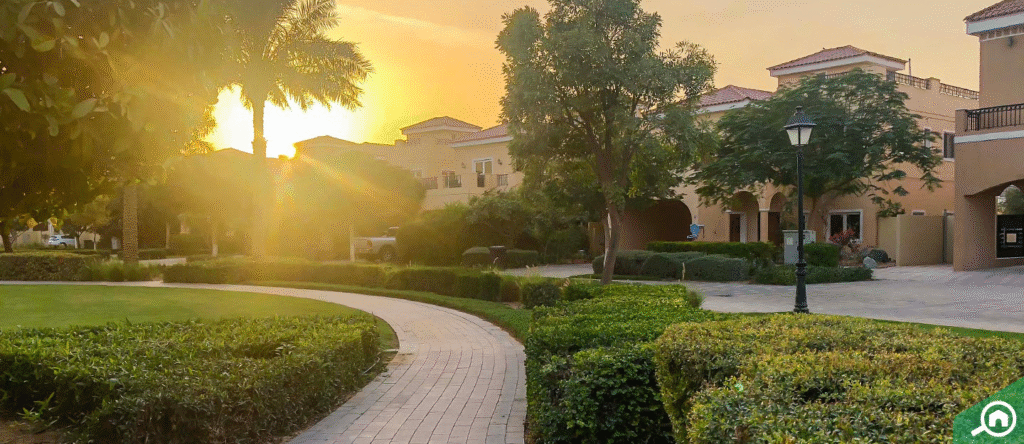
The lifestyle property market comes with hurdles. Maintenance fees average AED 8-12 per square foot in JVC and The Valley, and AED 10-15 in Dubai Hills and MBR City, higher than in emerging areas like Dubai South. Ongoing construction in newer phases, like Sobha Hartland II or Nara in The Valley, may bring temporary noise or delays. The short-term rental market, while lucrative, faces competition from hotels, which could pressure yields in oversaturated periods.
Yet, these challenges are part of the opportunity. Maintenance fees support family-friendly amenities, from safe play areas to smart security, which attract residents and tenants. Early investment in off-plan projects offers lower prices, with historical trends showing 15-20% appreciation for early buyers in JVC and The Valley. Dubai’s real estate market, with $142.4 billion in sales in 2024, remains robust, and community-focused properties are driving its growth.
Stories That Bring It to Life
The human stories behind Dubai’s lifestyle properties make them shine. Khalid, a father in JVC, loves the community vibe. “Our kids play soccer in the park, and we host barbecues,” he says. Maya, a mother in Dubai Hills, cherishes the space. “Our villa’s garden is our sanctuary, and the schools are amazing,” she says. Sarah, an expat in MBR City, enjoys the lifestyle. “The lagoon picnics are a family favorite,” she says. In The Valley, Ahmed sees both joy and value. “I bought a villa for AED 3 million, and it’s up 12%,” he shares. “But I love the nature trails.”
These stories reflect the dual appeal of Dubai’s community-focused properties: they’re nurturing homes and smart investments. Whether it’s a park playdate in JVC, a festival in Dubai Hills, or a lagoon picnic in MBR City, these communities create moments that linger.
Tips for Family Buyers
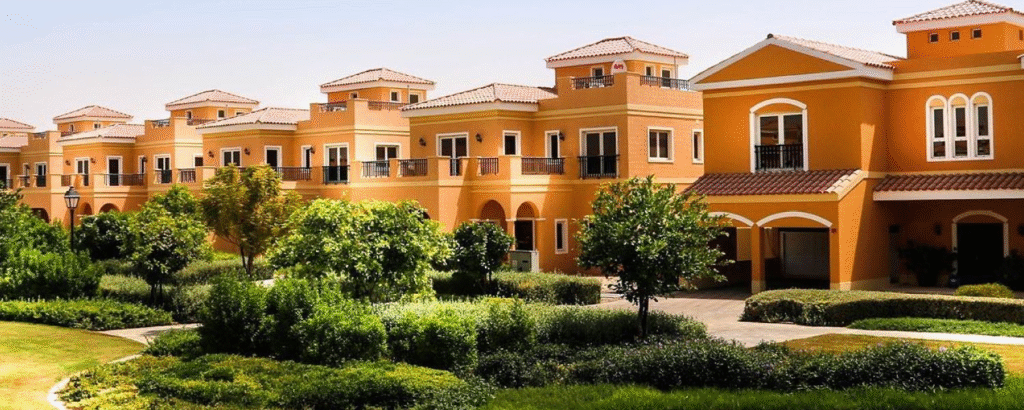
Ready to dive into Dubai’s lifestyle property market? Here’s how to make it happen:
- Research Family-Friendly Areas: Study price growth and amenities in JVC, Dubai Hills, MBR City, and The Valley to find the best fit for your family.
- Choose Trusted Developers: Work with Emaar, Nakheel, or Sobha Realty for quality and reliability.
- Plan for the Long Term: Aim for a 5-10 year horizon to maximize appreciation, especially in off-plan projects.
- Leverage Expertise: Partner with local agents or platforms like Bayut to navigate market trends and secure family-oriented homes.
The Future of Dubai’s Lifestyle Properties
In 2025, Dubai’s lifestyle properties are more than real estate they’re a vision of connected, joyful living. New projects like Sobha Hartland II, Nara in The Valley, and Park Heights 3 are pushing the boundaries of family-focused innovation. As Dubai aims for 25 million visitors by 2030, these communities will remain vibrant hubs, driving property values and rental demand higher.
For families, it’s about the joy of connection park playdates, lagoon picnics, and community festivals. For investors, it’s a chance to build wealth in a city that’s rewriting the rules of real estate. Dubai’s lifestyle properties are where dreams meet reality, offering a nurturing, luxurious lifestyle that’s hard to resist. In 2025, these communities aren’t just attracting families they’re shaping the future of Dubai’s charm.
read more: Dubai Real Estate 2025: Lifestyle Projects Driving Global Demand



